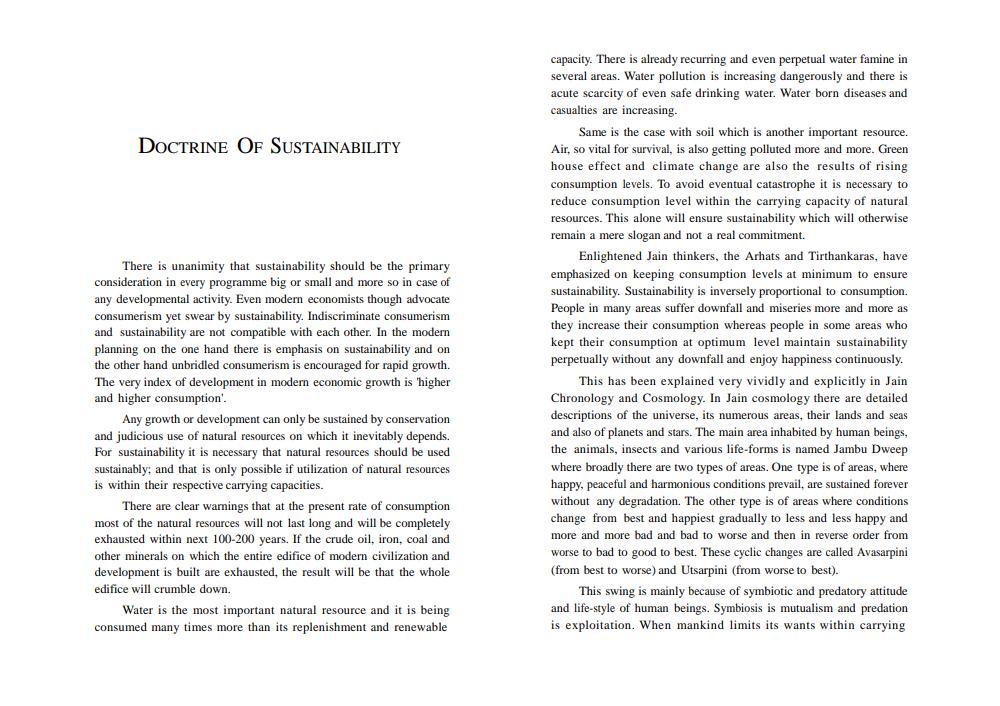________________
DOCTRINE OF SUSTAINABILITY
There is unanimity that sustainability should be the primary consideration in every programme big or small and more so in case of any developmental activity. Even modern economists though advocate consumerism yet swear by sustainability. Indiscriminate consumerism and sustainability are not compatible with each other. In the modern planning on the one hand there is emphasis on sustainability and on the other hand unbridled consumerism is encouraged for rapid growth. The very index of development in modern economic growth is 'higher and higher consumption'.
Any growth or development can only be sustained by conservation and judicious use of natural resources on which it inevitably depends. For sustainability it is necessary that natural resources should be used sustainably, and that is only possible if utilization of natural resources is within their respective carrying capacities.
There are clear warnings that at the present rate of consumption most of the natural resources will not last long and will be completely exhausted within next 100-200 years. If the crude oil, iron, coal and other minerals on which the entire edifice of modem civilization and development is built are exhausted, the result will be that the whole edifice will crumble down.
Water is the most important natural resource and it is being consumed many times more than its replenishment and renewable
capacity. There is already recurring and even perpetual water famine in several areas. Water pollution is increasing dangerously and there is acute scarcity of even safe drinking water. Water born diseases and casualties are increasing.
Same is the case with soil which is another important resource. Air, so vital for survival, is also getting polluted more and more. Green house effect and climate change are also the results of rising consumption levels. To avoid eventual catastrophe it is necessary to reduce consumption level within the carrying capacity of natural resources. This alone will ensure sustainability which will otherwise remain a mere slogan and not a real commitment.
Enlightened Jain thinkers, the Arhats and Tirthankaras, have emphasized on keeping consumption levels at minimum to ensure sustainability. Sustainability is inversely proportional to consumption. People in many areas suffer downfall and miseries more and more as they increase their consumption whereas people in some areas who kept their consumption at optimum level maintain sustainability perpetually without any downfall and enjoy happiness continuously.
This has been explained very vividly and explicitly in Jain Chronology and Cosmology. In Jain cosmology there are detailed descriptions of the universe, its numerous areas, their lands and seas and also of planets and stars. The main area inhabited by human beings. the animals, insects and various life-forms is named Jambu Dweep where broadly there are two types of areas. One type is of areas, where happy, peaceful and harmonious conditions prevail, are sustained forever without any degradation. The other type is of areas where conditions change from best and happiest gradually to less and less happy and more and more bad and bad to worse and then in reverse order from worse to bad to good to best. These cyclic changes are called Avasarpini (from best to worse) and Utsarpini (from worse to best).
This swing is mainly because of symbiotic and predatory attitude and life-style of human beings. Symbiosis is mutualism and predation is exploitation. When mankind limits its wants within carrying




